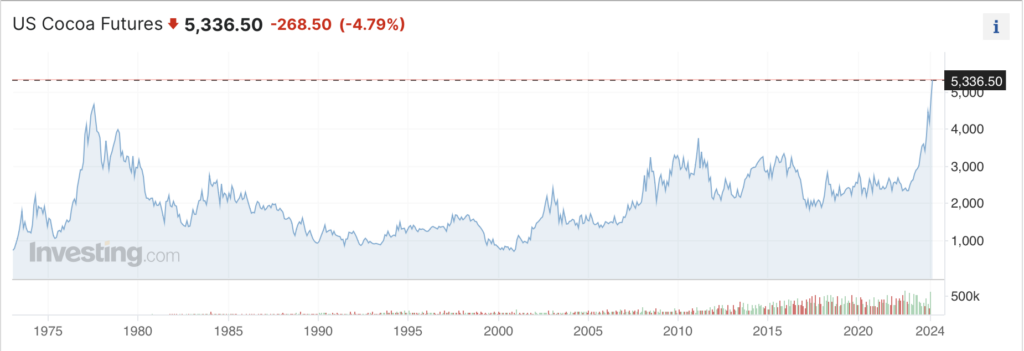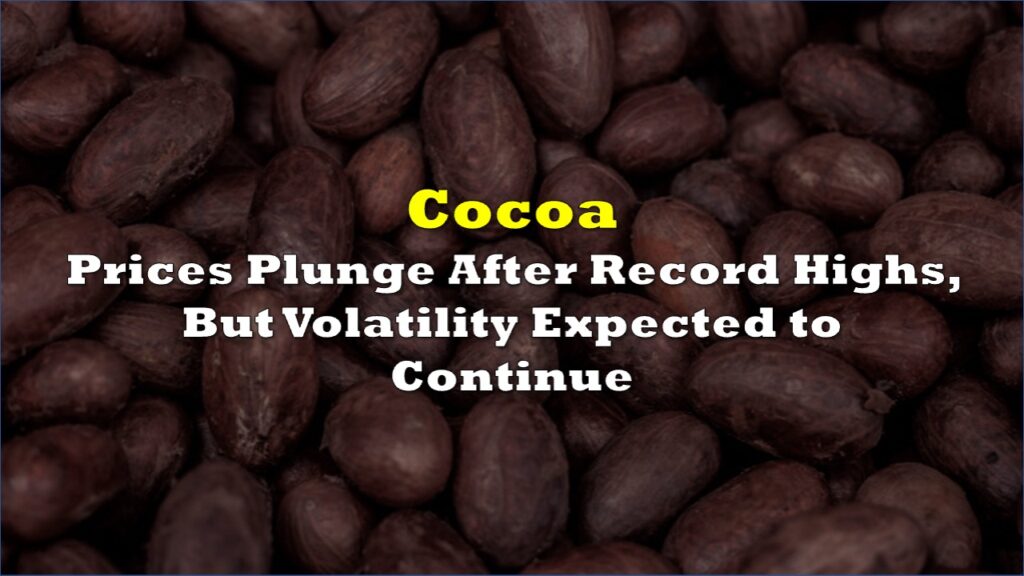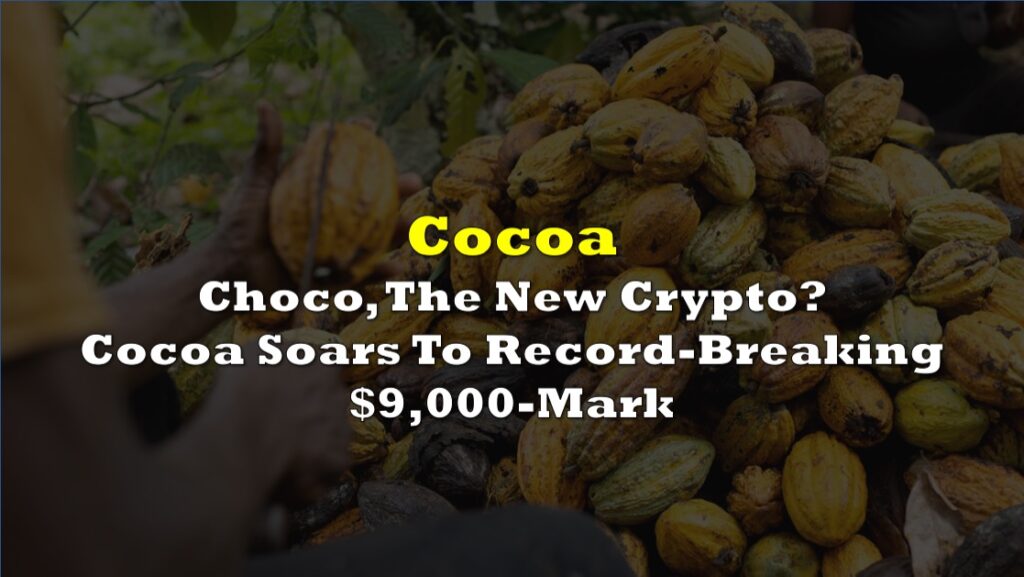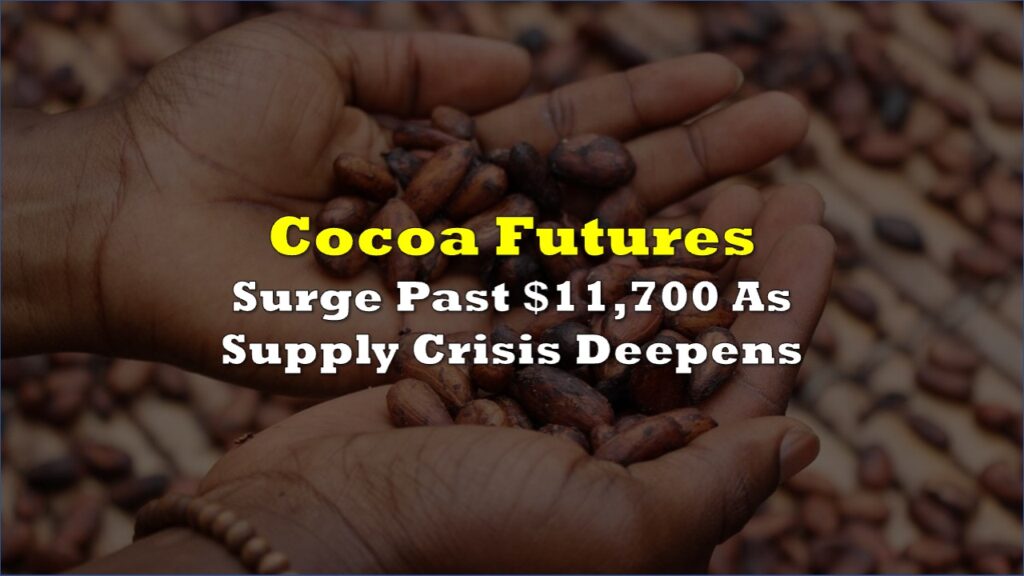After wholesale cocoa prices surged past their 46-year-old peak, reaching a record high, chocolate prices are poised to increase, prompting what could be a crisis-like phenomenon for the grocery staple.
In an analysis by Bloomberg’s Javier Blas, he noted a seismic industry shift is underway as prices soar to unprecedented levels, driven by a perfect storm of supply shortages and escalating demand. Historically low prices, fueled by an abundance of West African smallholder farmers, have given way to a price surge that shows no signs of abating.
To understand the crisis, one has to travel to West Africa, home to ~75% of the worlds production. The king of cocoa is Ivory Coast, which accounts for 2 million tons of bean output, compared to global consumption of about 5 million tons.
— Javier Blas (@JavierBlas) February 19, 2024
2/10 @Opinion
Cocoa production, largely reliant on impoverished smallholders in West Africa, has suffered from a lack of investment and modernization. This has led to a supply-demand gap that has persisted for three consecutive years, with global consumption outstripping production.
The recent price surge has caught the attention of industry leaders, with Michele Buck, CEO of The Hershey Co., warning of impending business management challenges. There are concerns about potential price gouging and shrinkflation as companies grapple with higher costs.

West African countries such as Ivory Coast, Ghana, Cameroon, and Nigeria, which collectively produce 75% of the world’s cocoa, are at the epicenter of this upheaval. The legacy of former Ivorian president Félix Houphouët-Boigny looms large, as his efforts transformed Ivory Coast into a leading cocoa producer.
However, the industry faces significant supply challenges, including aging trees, insufficient investment, and government control of local markets. This has resulted in a projected shortfall of 300,000 – 500,000 tons, the largest in decades, and has depleted industry inventories to levels comparable to those seen in the 1970s.
Despite rising demand, fueled by a doubling of global chocolate consumption over the past 30 years, sustainability concerns loom large. Balancing consumer demands with the needs of producers, including addressing issues such as aging trees, deforestation, and climate impacts, presents a formidable challenge.
With demand outstripping output by so much, inventories will fall for the third consecutive year. Inside the industry, I hear that by the end of the season, cocoa stockpiles, measured by the stock-to-consumption ratio, could drop to as little as 25%.
— Javier Blas (@JavierBlas) February 19, 2024
6/10 @Opinion pic.twitter.com/EkHMOhQSPj
In response to the crisis, non-West African producers are enjoying a windfall, with the potential for increased cocoa tree planting. However, unpredictable weather patterns, exacerbated by climate change, are further complicating supply challenges.
For the confectionary industry, the price surge presents acute challenges, with potential margin reductions and slower demand growth on the horizon. However, many see this crisis as a necessary one, with higher prices needed to incentivize replanting and better maintenance of cocoa trees.
“It’s a necessary crisis. The world needs higher prices to encourage the re-planting millions of old trees — and take better care of the current ones,” Bias noted.
While market observers anticipate a rebalancing of the cocoa market over the coming years, consumers are advised to brace for higher prices in the meantime.
Information for this story was found via Bloomberg and the sources mentioned. The author has no securities or affiliations related to the organizations discussed. Not a recommendation to buy or sell. Always do additional research and consult a professional before purchasing a security. The author holds no licenses.









